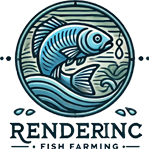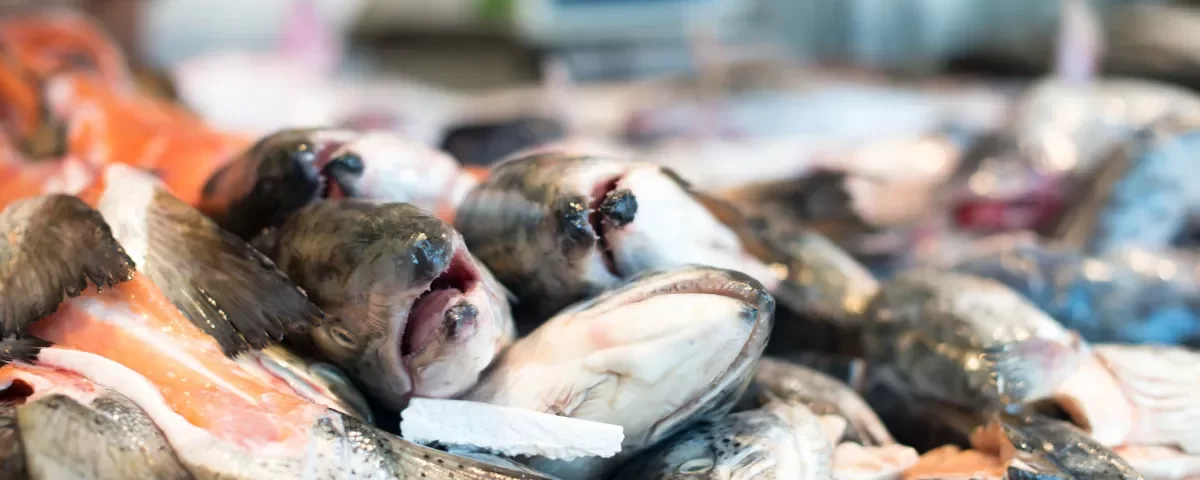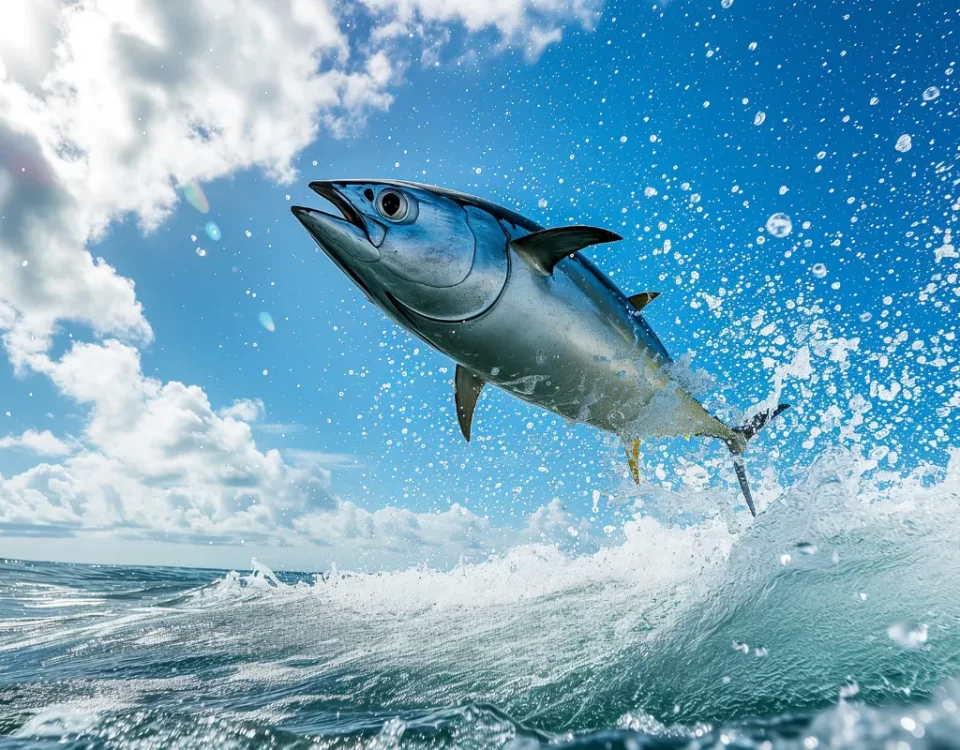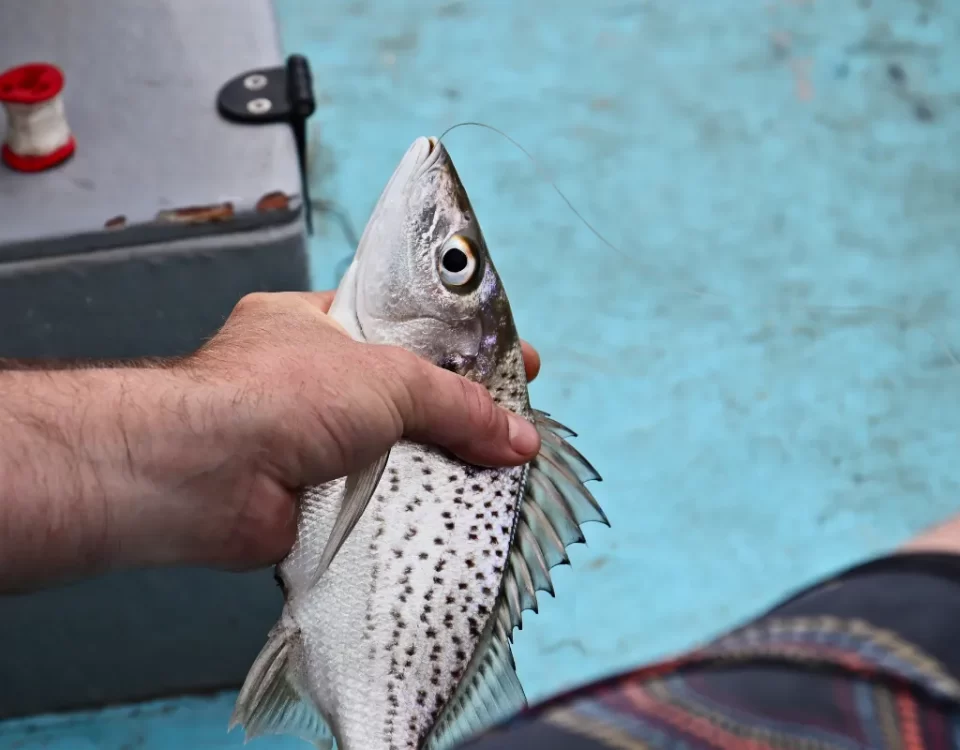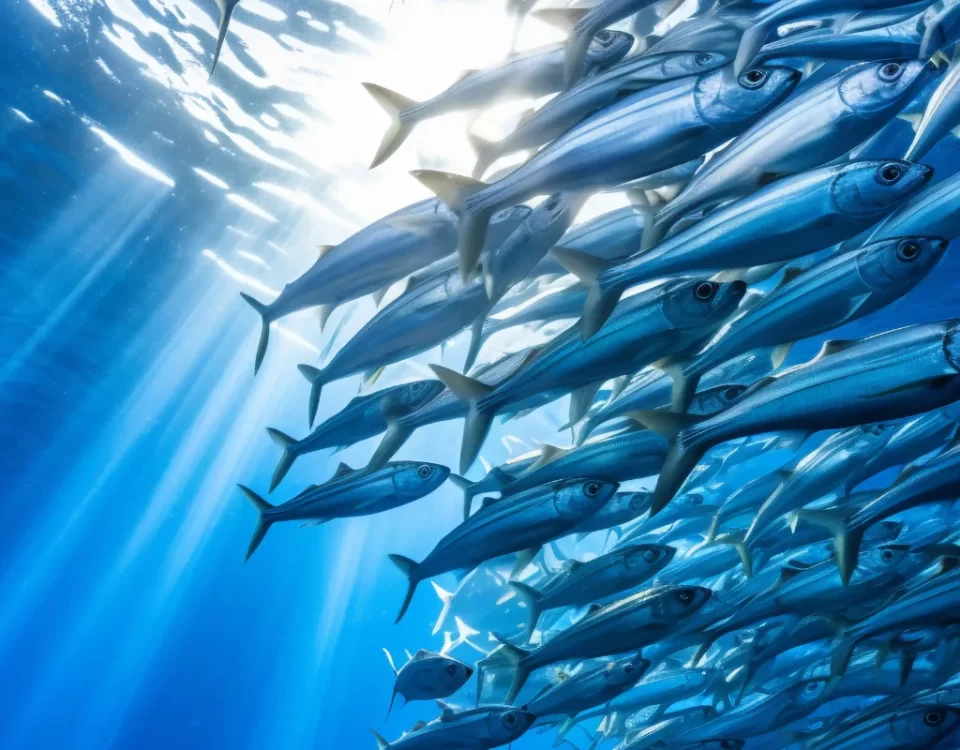How to Prevent and Treat Fish Diseases in Aquaculture

Best Practices for Hatchery Management in Aquaculture
setembro 13, 2024
Sustainable Aquaculture Certifications: What You Need to Know
setembro 14, 2024In the realm of aquaculture, where the delicate balance of water quality, nutrition, and environmental conditions determines the success of fish farming endeavors, the specter of fish diseases looms large. The importance of preventing and treating fish diseases in aquaculture cannot be overstated, as the outbreak of a single disease can wreak havoc on an entire stock, leading to significant economic losses and jeopardizing the sustainability of the operation. As stewards of aquatic ecosystems, aquaculturists must arm themselves with knowledge and strategies to safeguard the health and well-being of their finned charges.
This article aims to delve into the intricacies of fish disease prevention and treatment in aquaculture, offering insights into best practices and effective solutions. By shining a light on the common disease culprits, outlining preventive measures, and discussing treatment options, aquaculturists can fortify their defenses against potential outbreaks and foster thriving, disease-free fish populations.
Importance of Disease Prevention
Effective disease prevention in aquaculture serves as the cornerstone of a successful fish farming operation. By proactively addressing risk factors such as water quality management, stocking density, and biosecurity measures, aquaculturists can create an environment that is inhospitable to disease-causing pathogens. Vigilance and early detection are crucial in averting the spread of diseases, as timely interventions can mitigate losses and minimize the impact of outbreaks.
Key Points to be Covered
Throughout this article, we will explore the following key aspects of fish disease prevention and treatment in aquaculture:
- Identifying Common Fish Diseases: An overview of prevalent diseases affecting fish in aquaculture, their causes, symptoms, and modes of transmission.
- Preventive Strategies: Practical tips and guidelines for minimizing disease risks through proper management practices, biosecurity protocols, and routine health monitoring.
- Treatment Options: A discussion of effective treatment methods, including the use of medications, vaccines, and natural remedies to combat fish diseases.
- Sustainable Practices: Highlighting the importance of eco-friendly approaches to disease management that promote the long-term health of aquatic ecosystems and minimize environmental impact.
By exploring these key points in depth, aquaculturists can arm themselves with the knowledge and tools needed to protect their fish stocks against the perils of disease, ensuring the vitality and prosperity of their aquaculture endeavors.
Understanding common fish diseases
Fish diseases can pose a significant threat to aquaculture operations, leading to economic losses and compromising the health of fish populations. Understanding the common ailments that affect fish in aquaculture is crucial for preventing and treating them effectively. In aquaculture settings, several diseases can impact different species of fish, each with distinct characteristics and treatment requirements.
Explanation of common fish diseases in aquaculture
One of the most common fish diseases found in aquaculture is Ichthyophthirius multifiliis, commonly known as Ich. This parasitic infection affects the skin and gills of fish, leading to the formation of white cysts. Another widespread ailment is Aeromonas infection, caused by bacteria of the genus Aeromonas, which can result in ulceration and septicemia in fish. Additionally, columnaris disease, caused by the bacterium Flavobacterium columnare, is prevalent in aquaculture and can lead to skin lesions and gill damage. Understanding the causative agents and symptoms of these diseases is essential for prompt diagnosis and treatment.
Symptoms to look out for in infected fish
Identifying early signs of fish diseases is crucial for timely intervention and effective management. Common symptoms of infected fish include abnormal swimming behavior, loss of appetite, lethargy, abnormal growths or discoloration, excess mucus production, and respiratory distress. Observing changes in the skin, fins, and gills of fish can provide valuable insights into their health status. Proper monitoring and vigilance are essential to detect potential diseases early on and prevent their spread to the entire population.
How diseases can spread in aquaculture settings
Diseases in aquaculture can spread through various channels, including water, equipment, wildlife, and infected fish. Poor water quality and overcrowding can exacerbate the transmission of diseases among fish populations. Introduction of new fish without proper quarantine measures can also introduce pathogens to the existing stock. Biosecurity measures, such as sanitation, quarantine protocols, and controlled access to aquaculture facilities, are essential for preventing the spread of diseases. Regular health checks and monitoring can help identify potential outbreaks early and implement appropriate treatments to mitigate their impact.
For successful aquaculture operations, it is imperative to have a comprehensive understanding of common fish diseases, recognize their symptoms, and implement effective prevention and treatment strategies to safeguard fish health and ensure sustainable production.
Preventative measures
In the intricate world of aquaculture, the importance of maintaining good water quality cannot be overstated when it comes to preventing diseases in fish populations. Clean and well-oxygenated water serves as the lifeblood of any aquaculture system, ensuring the overall health and well-being of fish. Regular monitoring of water parameters such as pH, ammonia levels, and temperature is essential to catch any deviations that could potentially lead to stress or disease outbreaks among the fish.
Proper nutrition and feeding practices play a crucial role in enhancing the immune defenses of fish and reducing their susceptibility to diseases. Providing a well-balanced diet rich in essential nutrients, vitamins, and minerals helps boost the overall health of fish and improves their resilience against pathogens. Overfeeding should be avoided, as it can lead to water pollution and create a breeding ground for harmful bacteria and parasites.
When introducing new fish into an aquaculture system, quarantine procedures should be strictly followed to prevent the inadvertent introduction of diseases. Isolating newly acquired fish for a period of time allows for closer observation and early detection of any signs of illness. This precautionary measure safeguards the existing fish population from potential contagions and mitigates the risk of widespread infections that could threaten the health of the entire stock.
Regular health checks and monitoring of fish populations are imperative to swiftly identify any signs of abnormalities or illnesses. Vigilant observation of fish behavior, appetite, and physical appearance can provide valuable insights into the overall health status of the aquatic inhabitants. Prompt intervention upon detecting any health concerns can prevent the escalation of diseases and minimize the impact on the aquaculture operation.
Best Practices for Disease Treatment
In the realm of aquaculture, implementing best practices for disease treatment is vital to maintaining the health and productivity of fish populations. When encountering diseased fish, it is essential to act swiftly and decisively to prevent the spread of pathogens and minimize mortality rates. Here, we delve into an overview of common treatment options for fish diseases, underscore the importance of early detection and diagnosis, discuss the nuances of proper medication administration and dosages, and touch on the significance of isolation procedures for infected fish.
Overview of Common Treatment Options for Fish Diseases
When combating fish diseases in aquaculture, there are several treatment options available. These may include the use of chemical treatments, antibiotics, antiparasitics, and probiotics. Each treatment type targets specific pathogens and symptoms, and the choice of treatment depends on the diagnosed disease and its severity. Consulting with a veterinarian or fish health specialist is advisable to ensure the appropriate treatment is selected for optimal results.
Importance of Early Detection and Diagnosis
Early detection and diagnosis play a pivotal role in successful disease treatment in aquaculture. Monitoring fish regularly for signs of illness, such as abnormal behavior, changes in appetite, or physical abnormalities, enables prompt action. Timely diagnosis allows for the implementation of effective treatment measures before the disease progresses and spreads throughout the fish population, ultimately minimizing losses and promoting overall fish health.
Proper Medication Administration and Dosages
Administering medications correctly is crucial in ensuring their efficacy and preventing potential harm to the fish. It is essential to follow manufacturer instructions and veterinary recommendations when administering medications, including adhering to proper dosages, treatment durations, and withdrawal periods. Overdosing or underdosing can lead to treatment failure or the development of medication-resistant strains of pathogens, underscoring the importance of precise medication administration.
Isolation Procedures for Infected Fish
When diseased fish are identified within an aquaculture setting, swift isolation is imperative to prevent disease transmission to healthy individuals. Quarantine tanks or designated isolation areas should be utilized to separate infected fish from the general population. Additionally, implementing biosecurity measures, such as disinfection protocols and restricted access to infected areas, can help contain the spread of pathogens and safeguard the overall health of the fish farm.
This comprehensive approach to disease treatment in aquaculture underscores the importance of proactive management strategies and diligent care in ensuring the well-being of fish populations. By adhering to best practices, early detection methods, proper medication protocols, and isolation procedures, aquaculturists can effectively combat fish diseases and maintain a thriving and sustainable aquatic environment.
Natural remedies for fish diseases
In the realm of aquaculture, the utilization of natural remedies has gained substantial recognition as a promising approach to combat fish diseases. These remedies, ranging from herbal treatments to probiotics, offer a holistic alternative to traditional pharmaceutical interventions. Herbal treatments often involve the use of medicinal plants such as neem, aloe vera, and garlic, known for their antimicrobial properties. On the other hand, probiotics introduce beneficial bacteria into the aquatic environment, promoting a healthy microbial balance within the fish.
Herbal Treatments for Fish Diseases
Herbal treatments have shown remarkable potential in preventing and treating fish diseases in aquaculture. For instance, neem leaves possess antibacterial and antifungal properties, making them effective against common pathogens that afflict fish. Aloe vera, known for its soothing and healing properties, can be utilized to treat skin lesions and wounds in fish. Moreover, the antimicrobial properties of garlic make it a valuable herbal remedy for combating bacterial infections in fish.
Probiotics in Aquaculture
The incorporation of probiotics in fish farming has emerged as a sustainable means to enhance the immune response and overall health of aquatic species. Probiotics, often in the form of beneficial bacteria like Lactobacillus and Bacillus species, colonize the gut of fish and inhibit the growth of pathogenic bacteria. By maintaining a healthy gut microbiota, probiotics contribute to disease prevention and improved nutrient absorption in fish.
Benefits of Natural Remedies in Aquaculture
The adoption of natural remedies in aquaculture brings forth a myriad of benefits beyond disease management. Unlike synthetic medications, natural remedies are often environmentally friendly, posing minimal risks to the aquatic ecosystem. Additionally, the use of herbal treatments and probiotics can help reduce the development of antibiotic resistance in pathogens, safeguarding the long-term sustainability of fish farming practices.
Successful Cases of Natural Treatments
Numerous case studies have demonstrated the efficacy of natural remedies in treating fish diseases in aquaculture settings. For instance, a study conducted on the use of probiotics in tilapia farming revealed a significant reduction in mortality rates and improved growth performance among treated fish. Similarly, herbal remedies like neem extracts have been successful in controlling parasitic infestations in various fish species. These examples underscore the potential of natural remedies as valuable tools in the quest for sustainable aquaculture practices.
Environmental Factors Affecting Fish Health
Environmental factors play a critical role in determining the overall health and well-being of fish in aquaculture settings. Various elements within the aquatic environment can profoundly impact fish health, including water temperature, pH levels, and oxygen levels. Understanding the influence of these factors is essential for preventing and treating fish diseases.
Impact of Water Temperature
Water temperature is a crucial environmental factor that significantly affects fish health. Fish are ectothermic animals, meaning their body temperature is regulated by the surrounding water. Extreme fluctuations in water temperature can stress fish, weaken their immune system, and make them more vulnerable to diseases. It is essential to maintain optimal temperature ranges for different fish species to ensure their health and well-being.
Impact of pH Levels
pH levels refer to the acidity or alkalinity of water and can have a profound impact on fish health. Fluctuations in pH levels can stress fish, leading to various health issues. Fish have specific pH level requirements based on their species, and deviations from these optimal levels can result in diseases. Monitoring and maintaining appropriate pH levels in aquaculture systems are crucial for promoting fish health.
Impact of Oxygen Levels
Oxygen is vital for the survival of fish as they rely on it for respiration. Low oxygen levels in water can lead to suffocation, stress fish, and make them more susceptible to diseases. Proper aeration and oxygenation of water are essential to ensure that fish receive an adequate supply of oxygen. Monitoring oxygen levels regularly and addressing any deficiencies promptly is key to maintaining a healthy environment for fish.
How Stress Can Make Fish More Susceptible to Diseases
Stress plays a significant role in fish health and disease susceptibility. Various factors, such as poor water quality, overcrowding, handling, and sudden environmental changes, can induce stress in fish. Stressed fish have weakened immune systems, making them more vulnerable to infections and diseases. Minimizing stressors and providing a low-stress environment can help enhance fish health and reduce the risk of diseases.
Biosecurity Measures in Aquaculture
In the realm of aquaculture, where delicate ecosystems are managed for optimal fish growth and production, the implementation of robust biosecurity measures is paramount. Biosecurity refers to the practices and protocols put in place to prevent the introduction and spread of diseases within aquaculture facilities. The importance of biosecurity cannot be overstated, as disease outbreaks can not only lead to substantial economic losses but also pose a significant threat to the entire aquaculture operation.
Importance of Biosecurity in Preventing Disease Outbreaks
Effective biosecurity measures serve as a shield against the entry of pathogens into aquaculture systems. By establishing strict biosecurity protocols, farm operators can minimize the risk of disease transmission via various routes, such as contaminated water sources, infected stocking material, or even personnel movement. Disease prevention is always preferable to treatment, as once pathogens infiltrate a fish population, the consequences can be dire. Therefore, investing in biosecurity is not just a practical measure but a safeguard for the long-term sustainability of aquaculture operations.
Implementing Biosecurity Protocols in Aquaculture Facilities
To ensure the integrity of their operations, aquaculture facilities must establish and strictly adhere to a comprehensive biosecurity plan. This plan should encompass various aspects, including controlling access to facilities, monitoring water quality, and regulating the introduction of new fish stocks. Physical barriers such as disinfection stations at entry points can help prevent the inadvertent transfer of pathogens. Regular health checks for fish populations and thorough cleaning and disinfection of equipment are also essential components of a robust biosecurity strategy.
Training Staff on Biosecurity Procedures and Protocols
One of the cornerstones of effective biosecurity in aquaculture is the training of staff on proper procedures and protocols. Employees working within aquaculture facilities must fully understand the significance of biosecurity measures and their role in upholding them. Training programs should cover topics such as disease recognition, correct handling techniques, and the importance of hygiene practices. By empowering staff with the knowledge and skills needed to implement biosecurity protocols effectively, aquaculture operators can greatly enhance the overall health and resilience of their fish stocks.
As we conclude our exploration into the realm of preventing and treating fish diseases in aquaculture, it is crucial to reiterate the key points that have been uncovered. Vigilance and proactive measures are the cornerstones of maintaining a healthy aquatic environment for your fish. By implementing proper biosecurity protocols, such as quarantine procedures and regular health monitoring, fish farmers can significantly reduce the risk of disease outbreaks that can wreak havoc on their operations.
Furthermore, it is essential for fish farmers to emphasize the importance of fish health and disease prevention above all else. Just as a shepherd watches over their flock, fish farmers must dedicate themselves to the well-being of their aquatic companions. Healthy fish not only ensure a stable business but also signify a commitment to ethical and sustainable aquaculture practices.
Therefore, I urge all fish farmers, whether seasoned veterans or novices, to take this matter seriously and incorporate the recommended practices into their daily operations. The hard work put into disease prevention today will pay off in the long run, leading to healthier, more robust fish stocks and a more resilient aquaculture enterprise overall.
In conclusion, let us all embark on this journey together, united in our mission to protect and nurture the aquatic life under our care. By working hand in hand with nature and embracing the symbiotic relationship between humans and fish, we can pave the way for a brighter future for aquaculture, where disease outbreaks are but a distant memory.

Michael Rivers is an experienced aquaculture enthusiast with over a decade of hands-on knowledge in fish farming and sustainable aquatic systems. Passionate about promoting eco-friendly practices, he shares his expertise on fish breeding, water management, and the latest advancements in aquaculture technology. Through his blog, Michael aims to help both beginners and seasoned fish farmers achieve success in their ventures while contributing to the growth of sustainable food production.
